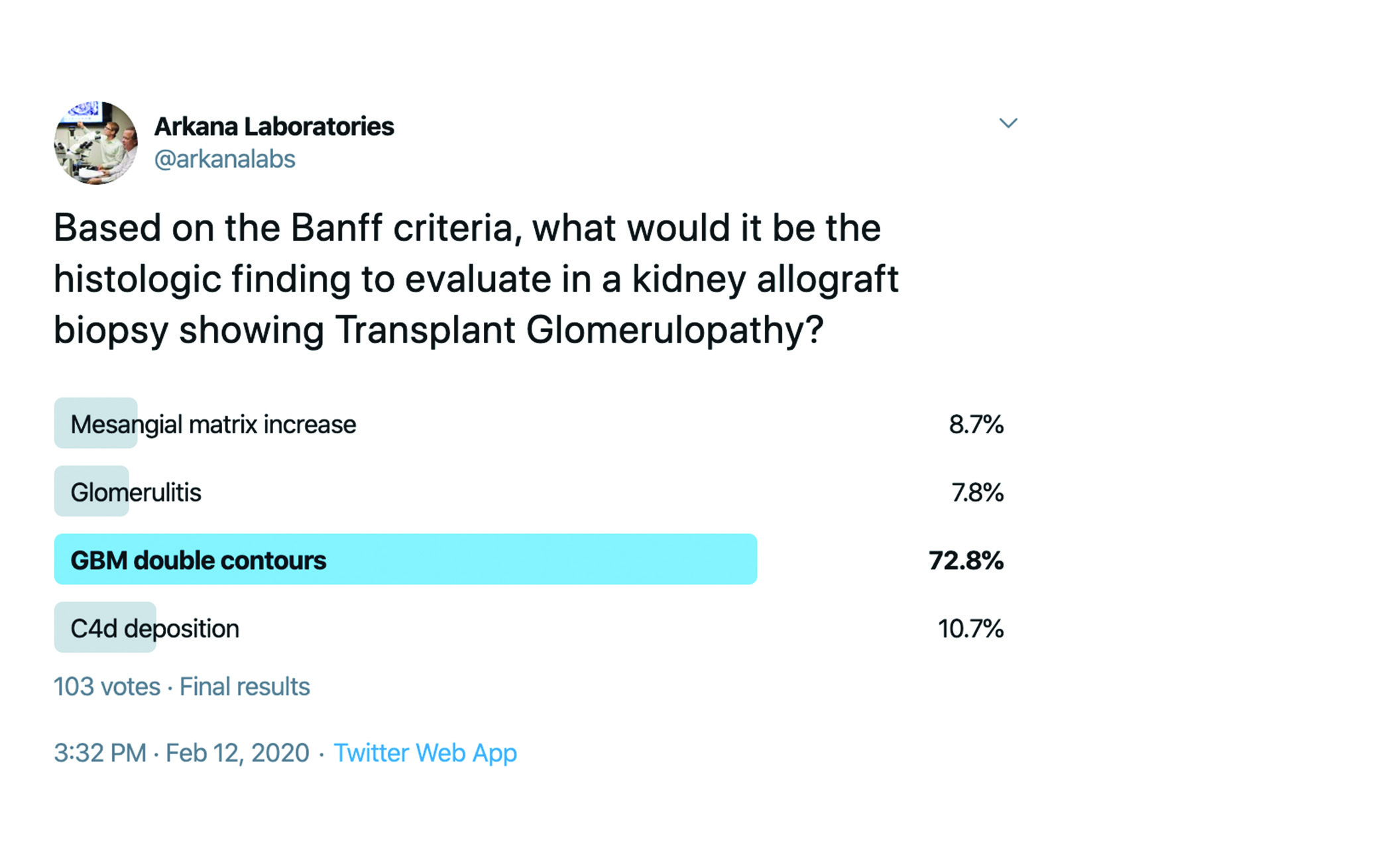Answer: C
Transplant glomerulopathy (TG) is characterized by duplication of glomerular basement membrane (GBM) and is graded based on the percentage of glomerular capillary loops with GBM duplication or double contours in the most affected non-sclerotic glomerulus by LM. Transplant glomerulopathy often indicates the presence of chronic antibody mediated rejection, for which there will be glomerulitis (B), C4d positivity in PTCs (C), and mesangial matrix increase (A). These findings are not in isolation from one another, therefore, “all of the above” would also be a correct answer.
The Banff Lesion Score cg is based on the presence and extent of GBM double contours or multilamination in the most severely affected glomerulus. The scoring should be performed on PAS or silver stains. Banff Lesion score cg should not be scored in ischemic or segmentally sclerosed glomeruli.
The Banff lesion score cg is as follows:
- cg0 — No GBM double contours by light microscopy (LM) or EM.
- cg1a — No GBM double contours by LM but GBM double contours (incomplete or circumferential) in at least 3 glomerular capillaries by EM, with associated endothelial swelling and/or subendothelial electron-lucent widening.
- cg1b — Double contours of the GBM in <25% of capillary loops in the most affected non-sclerotic glomerulus by LM; EM confirmation is recommended if EM is available.
- cg2 — Double contours affecting 26 to 50% of peripheral capillary loops in the most affected glomerulus.
- cg3 — Double contours affecting more than 50% of peripheral capillary loops in the most affected glomerulus
REFERENCES:
Hass M, et al. The Banff 2017 Kidney Meeting Report: Revised diagnostic criteria for chronic active T-cell mediated rejection, antibody-mediated rejection, and prospects for integrative endpoints for next-generation clinical trials. Am J Transplant 2018;1-15.
Roufosse C, et al. A 2018 Reference Guide to the Banff Classification of Renal Allograft Pathology. Transplantation 2018; 102:1795-1814.
Quick note: This post is to be used for informational purposes only and does not constitute medical or health advice. Each person should consult their own doctor with respect to matters referenced. Arkana Laboratories assumes no liability for actions taken in reliance upon the information contained herein.

